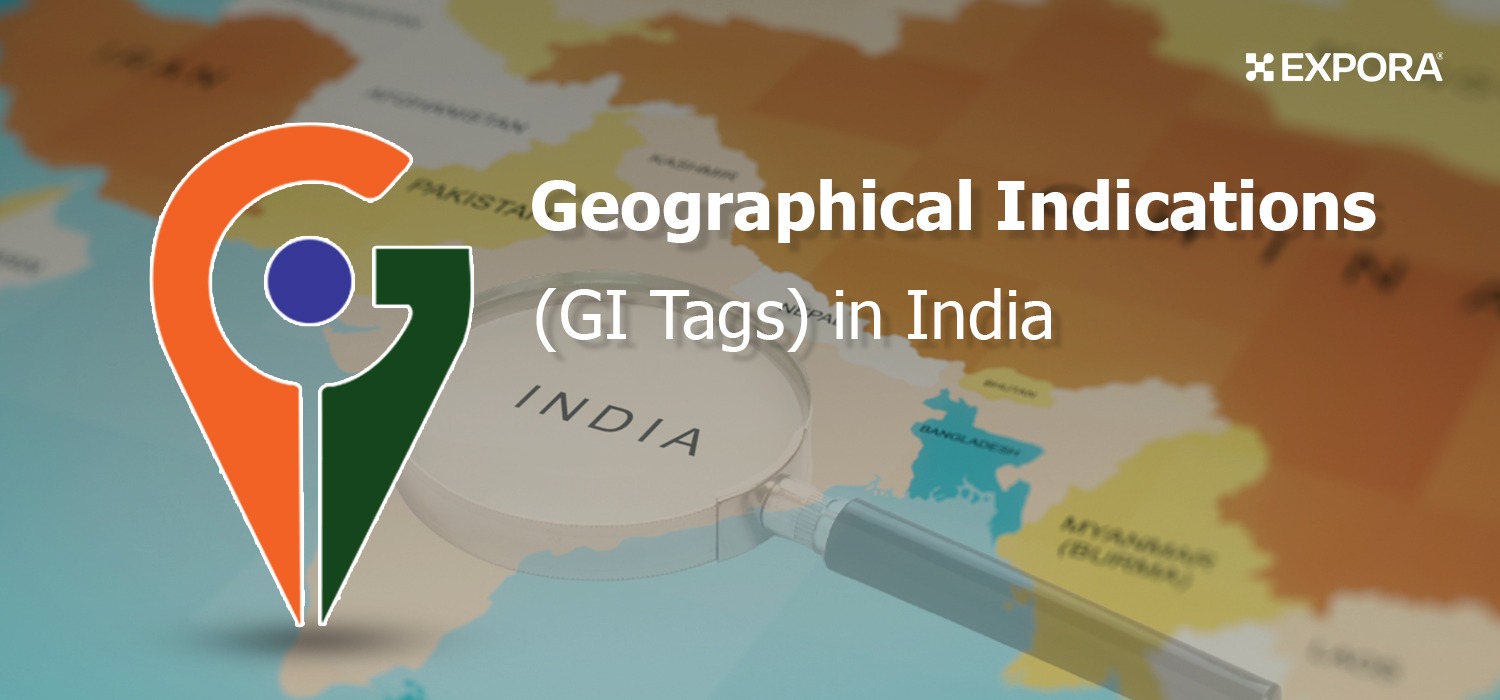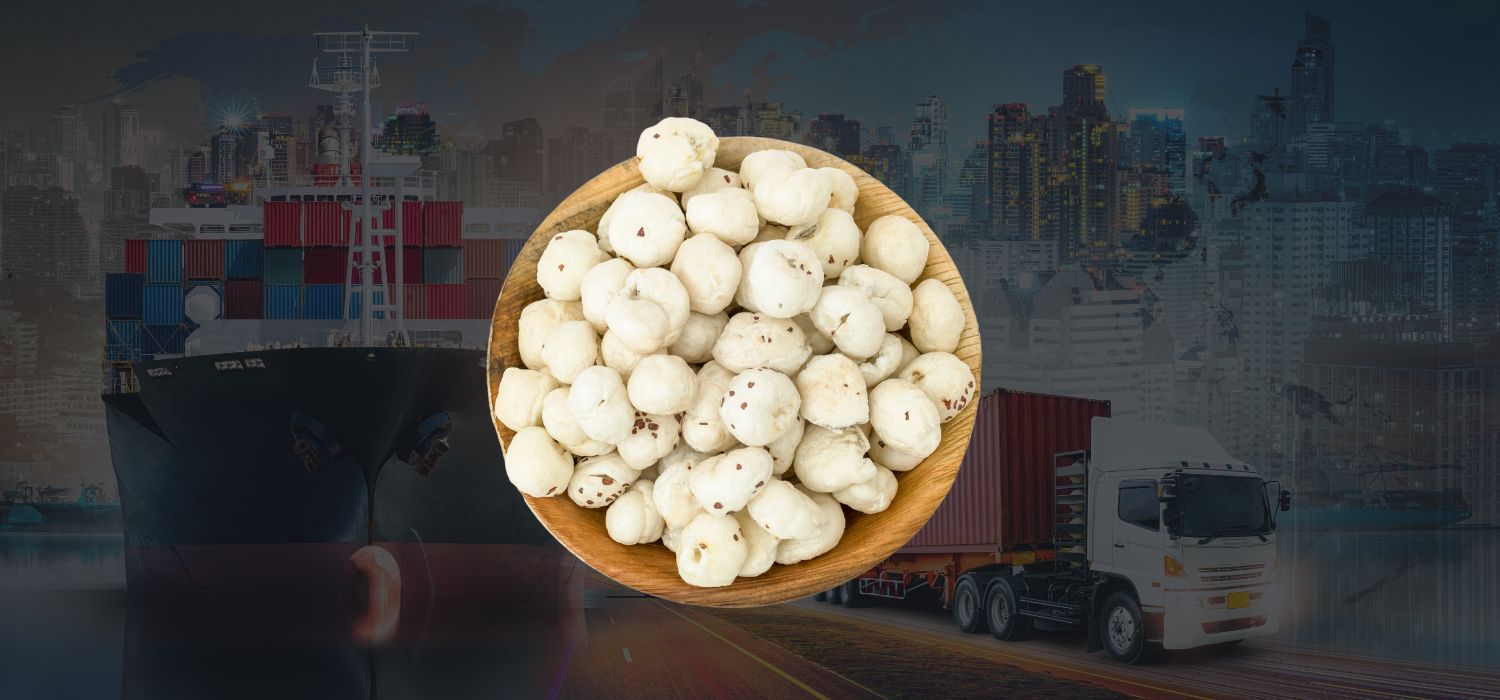Introduction In India, the majority of income comes from the agricultural sector. The nation ranks among the top producers of food items and agricultural goods worldwide. The growth rate of India’s agriculture sector predicted to be 3.5% in 2022–2023 and 3.0% in 2021–2022. In agriculture and related industries, the gross value added (GVA) increased by […]
India’s Fiery Delights: Discovering the different types of Red Chillies grown in India
18 Jul, 2023

Did you know India is the world’s largest producer of chillies?
Indeed, it is!
It has a roughly 37 share of the global market. India is not only the largest producer but also the largest consumer of chillies. It is one of the most popular spices used in Indian cuisine and households!
Apart from being a spice, chilli peppers also offer numerous health benefits. Dried chili peppers, which are typically sun-dried in significant quantities, contain approximately 100 times more vitamin A than their fresh counterparts. They are also beneficial to the digestive system, heart health, joint pain relief, weight loss, migraine prevention, cancer risk reduction, and allergy prevention.
Without chili, Indian cuisine would be incomplete. They are an essential and integral component of every dish we consume. Let’s have a closer look at types of red chillies, their origin and their specialities.
Origin of Red Chilli
Chilli, also known as mirch in India, is a South American fruit that the Portuguese brought to the subcontinent four centuries ago. They are commonly used to impart heat to dishes in a variety of cuisines. Chili peppers originated in Mexico and spread to the rest of the globe, where they are used for both culinary and medicinal purposes. Today, they are used to add heat and flavor to dishes all over the globe.
Red chilies originated were brought to India by Portuguese traders. Now India tops in the cultivation of dry red chili peppers.
Before the Portuguese introduced red chillies to India in the 16th century, Indians added heat to their cuisine with other spices. Long pepper (grown in Bengal in East India) and black pepper (grown along the Western Coast, particularly in Malabar in Kerala) were the two most common ingredients used to season Indian cuisine.
Long pepper, also known as pipli, belongs to the same family as black pepper, the Piperaceae. It is a long, slender pod that is approximately 2 to 3 inches long and has a mildly fragrant flavor. Long pepper is indigenous to India and was used in Indian cuisine for centuries before red chiles were introduced.
Also a member of the Piperaceae family is black pepper. It is a small, round, desiccated berry that is ground into a powder. Black pepper is indigenous to South India and has been one of the world’s most coveted commodities for centuries. It was used in Indian cuisine as well as other global cuisines.
Red Chillies in India
Many people believe that Indian food would be lacking something essential if it did not make extensive use of chilli peppers. No other cuisine in the world can compare to the flavor and spices that chiles add to each dish.
Grown across different regions, they add a fiery and flavorful kick to various dishes. From the smoky Kashmiri chilies to the intensely spicy Bhut Jolokia, India offers a wide variety of chili peppers.
Farmers in Andhra Pradesh, Karnataka, and Rajasthan carefully cultivate these chilies in fertile soil and favorable climates. After harvesting, the chilies are dried, ground, or used fresh to enhance the taste of everyday meals, turning them into delightful culinary experiences.
Red chilies hold cultural significance in India as well, being used in traditional remedies and festive celebrations. Their intense heat not only satisfies the taste buds but also enlivens the senses, making them an indispensable ingredient in Indian cuisine. Red peppers help your body digest food, relieve pain, and keep your lungs healthy. In Indian culture, red chillies are used at events to scare away bad spirits and bring good luck. Red peppers add depth of flavor and visual appeal to many kinds of food, whether they are used as a spice, garnish, or condiment.
Types of Red Chillies Grown in India
India is one of the largest producers and consumers of red chillies in the world. The country has a wide variety of red chili cultivars, each with its unique characteristics in terms of heat level, flavor, and color. Here are three popular types of red chillies grown in India
Type 1 – Kashmiri Chillies
Characteristic: Kashmiri chillies are known for their vibrant red color and mild to medium heat.
Grown in: They are primarily grown in the Kashmir region of India and are popular for their use in Kashmiri cuisine.
Kashmiri chillies are prized for their deep red color, which adds a rich hue to dishes without making them excessively spicy. They are often used in powdered form to lend a beautiful red color to curries, sauces, and marinades.
Kashmiri red chillies are the least hot of the Indian chili kinds but nonetheless a popular choice because of their eye-catching scarlet hue. Even though their heat isn’t particularly noticeable, these red chiles are much sought after all over India. These red chillies range from 1,000 to 2,000 SHU on the Scoville scale, making them suitable for a wide variety of applications, from marinades and pickles to gravies and stews.
Kashmiri chillies are widely used as a culinary ingredient in India and Pakistan. The slight sweetness of these little red peppers sets them different from other peppers, and makes them more tasty than hotter kinds like cayenne and jalapeno.
In terms of exports, Kashmiri chillies have seen significant demand in global markets. India exports most of its Kashmiri mirch to Nepal, Australia and United Kingdom and is the largest exporter of Kashmiri mirch in the World.
Type 2 – Byadgi Chillies
Characteristic: They are known for their unique wrinkled appearance and moderate heat level.
Grown in: Byadgi chillies are widely cultivated in the state of Karnataka in southern India. Byadgi chillies are dark red in color and have a slightly smoky flavor. They are commonly used in South Indian cuisine, especially in dishes like sambar (a lentil soup) and various chutneys. Byadgi chili powder is also used for its vibrant color and flavor in spice blends.
Byadagi chiles, often called Kaddi chillies, are cultivated in the Indian states of Karnataka and Tamil Nadu. Byadagi chilies, which are more fiery than most chilies, register between 8,000 and 15,000 SHU on the Scoville scale. This chili type, which is used in Goda Masala and other Maharashtrian spice mixes, is quite similar to paprika. Byadagi chiles are not spicy despite their outside crinkly appearance.
Byadgi chillies have seen substantial demand in international markets. India exports most of its Byadgi chilli to Malaysia, United States and Indonesia and is the largest exporter of Byadgi chilli in the World.
Type 3 – Guntur Chillies
Characteristic: They are known for their high heat levels and are considered one of the hottest red chili varieties in India.
Grown in: Guntur chillies are primarily grown in the Guntur district of Andhra Pradesh, a state in southern India. Guntur chillies are commonly used to make chili powder and chili flakes. They add a fiery kick to dishes and are an integral part of many spicy Andhra and Telugu cuisines.
The name “Guntur red chili” comes from the city of Guntur in Andhra Pradesh, and the chili is used extensively in Andhra cuisine. This red chili type is becoming increasingly common, so farmers in Madhya Pradesh have started cultivating some of their own. The Scoville heat units (SHU) of Guntur chilies, which account for over 30 percent of India’s red chili export, range from 30,000 to 40,000.
The Teja Chilli is a premium chilli pepper from the Guntur (chilli) region. Among the various varieties of chilies sold in India, this is one of the most in-demand ones. Teja chilli is one of the strongest chilies in India, with a fiery, piercing heat.
The global popularity of Guntur chillies can be attributed to their intense spiciness, which adds a fiery kick to dishes. India exports most of its Chilly guntur to the United States, Australia and Saudi Arabia and is the largest exporter of Chilly guntur in the World.
Other Types of Red Chillies
Apart from the major 3 types of red chillies, there are more chillies available in the market with different specifications. Here are some of them:
Bird’s Eye Chili
This fiery chili pepper, also known as Dhani mirchi, was developed in Manipur and Mizoram, where it is cultivated extensively. The Bird’s Eye Chilli is quite fiery, with a Scoville scale rating of 30,000 to 100,000 SHU. They add a serious kick to dishes and may be found in everything from curries to stews. Although most Bird’s Eye chiles are red, green and orange varieties exist.
Mathania
Mathania chillies, sometimes called Lal Badshah of Rajasthan, are the key ingredient in many popular Rajasthani cuisines. The chilies are named for the town of Mathania, near Jodhpur, where they are grown. When the chili is still relatively fresh, it is soaked in mustard oil and eaten as a pickle in addition to its more common uses in dishes like curries and gravies. On the Scoville scale, these peppers fall between 50,000 and 70,000.
Bhoot Jolokia
The ghost pepper, or Bhoot or Bhut Jolokia, is popular in the northeastern states of Arunachal Pradesh, Manipur, Nagaland, Sikkim, and some parts of North Bengal. The Scoville heat unit (SHU) value of this pepper is 1,041,427, making it extremely spicy. Those who can handle the heat will find that dishes prepared with Bhoot Jolokia, such as chutneys, pickles, and the spiciest of curries, are wonderful. Take care if you’re not accustomed to working with it.
Boriya
This round, fiery chili is called Boria mirchi in Tamil Nadu and Andhra Pradesh, where it is farmed. Because of their vivid red color and distinctive spherical form, they are adorably adorable when raw. This medium-hot chili is a staple in Andhra and Tamil cooking, where it is used in everything from dals and curries to marinades for fish. The Scoville scale revealed that despite their diminutive size, these round chilies pack a mighty punch, with scores between 800,000 and 1,000,000 SHU.
Khola Chilli
Growing conditions for the Khola chili in Goa’s Canacona hills are ideal. Its flavor and hue have made it famous. Mango pickles, red chili sauce, and the famous recheado’ paste used for stuffing all feature this vivid red chili as a crucial ingredient.
Mundu Chilli
Small, round, and thin-skinned, they are predominantly grown in the Indian states of Tamil Nadu and Andhra Pradesh. The taste of mundu is unlike anything else. They add a distinctive flavor to various foods while being barely peppery.
Red chilli suppliers in India
India’s spice industry meets both domestic and global demands with efficiency and scale. However, finding reliable red chili suppliers for import-export purposes is a challenge due to various factors.
EXPORA is a trusted red chilli supplier in India. We address the challenges in this trade by working closely with a network of trusted manufacturers , ensuring a consistent supply of red chillies varieties. EXPORA sources responsibly and conducts rigorous quality control. We offer personalized packaging solutions for private labels of chilli. EXPORA exports whole red chillies as well as chilli powder.
Conclusion
India’s diverse climate and temperature enable the cultivation of numerous chili varieties, each with unique aromas, tastes, and levels of heat. Being the world’s largest producer and consumer of chillies, India’s love for this versatile and flavorful spice is evident. The country is home to different types of red chillies varieties, offering a rich selection to spice buyers.



